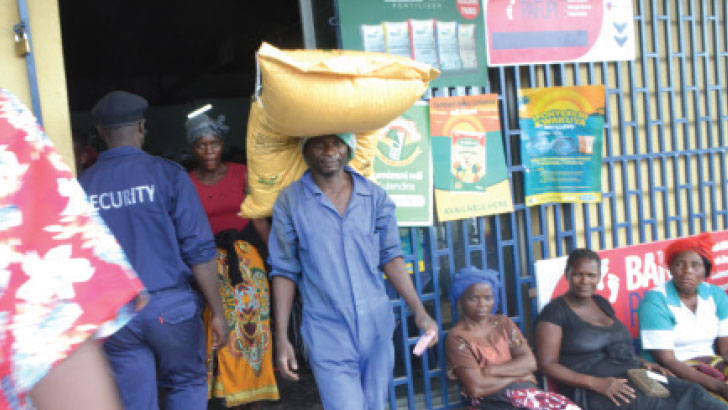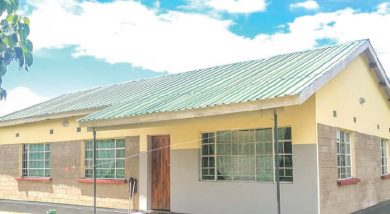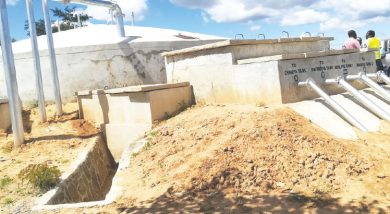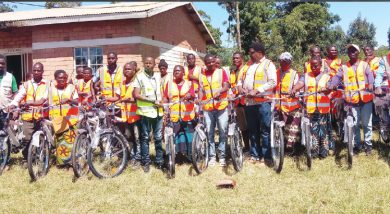Soaring fertiliser prices threaten AIP future
President Lazarus Chakwera was dealt a rough hand when he took office nearly two years ago: a debt-ridden and revenue starved fiscus; an unpredictable Covid-19 pandemic and rising cost of living amid rapidly increasing global fuel prices.
He has largely kept the ship afloat so far; barely.

But events in Eastern Europe now threaten to derail an agenda the President believes he has worked hard to put on course and take away the one thing that Chakwera has been broadly successful at: prevent, the majority of Malawians from starving, thanks to inputs-subsidy-driven bumper harvests.
There is now a possibility that Malawi’s most important sector, agriculture, could either collapse under the weight of sharp rises in fertiliser prices or bankrupt the country maintains the expensive subsidies not just to help the poor, but also to try and hold the agrarian Malawi economy together.
And for a good reason.
Agriculture, which in Malawi is dominated by fertiliser reliant crop husbandry, accounts for the 30 percent of the country’s gross domestic product (GDP); is the source of around 80 percent of national export earnings and employs more than 60 percent of the local workforce.
For nearly two decades, Malawi’s agriculture policy—and thus the fate of its broader economy—has largely centred around making fertiliser available and accessible at the lowest price possible to the largest number of people, especially the poor, at the taxpayer’s expense.
But now President Chakwera’s legacy-defining programme, the Affordable Inputs Programme (AIP), faces serious implementation challenges due to mounting rising global fertiliser prices, thanks to the Russia-Ukraine War.
On one hand, industry players say the rising global prices will disrupt local supply fundamentals.
On the other, public policy experts say at the rate prices are going, government cannot sustain the fertiliser subsidy component in its current design and pricing structure.
In an interview on Sunday, Fertiliser Association of Malawi executive administrator Mbawaka Phiri said the rising fertilizer prices could make it difficult for companies to import the commodity.
She said there is high demand for the commodity in the Northern Hemisphere, including North America, Europe along with most of Asia, northern South America, and northern Africa.
This, she said, has increased demand for the commodity, which is already facing supply challenges due to the Ukraine/Russian war.
Phiri said: “Most of the fertiliser firms will start raising prices now following the arrival of their new consignment, but the exact prices will depend on individual firms.
“Due to the rising prices on the global market amid increasing demand, it might be difficult for some firms to import the commodity. As a result there might be some shortages on the market.”
In the 2021/22 growing season, implementation of AIP was negatively affected after some of the large agrodelearers refused to participate in the supply of fertiliser because of the government set price of K27 000 per 50 kilogramme bag instead of K35 000.
In its report for March the association says the country is unlikely to have the capacity to manufacture fertiliser locally as production of phosphate and potassium is not feasible.
Global prices for raw materials such as ammonia, nitrogen, nitrates, phosphates, potash and sulphates, are also up 30 percent since the turn of the year and now exceed those seen during the food and energy crisis in 2008.
It said in Malawi, the main price increases come from the global market with 90 percent of the increases attributable to increases in global prices for fertiliser and fuel, and the weakening of the kwacha.drivers of domestic fertiliser
On the domestic market, fertiliser prices have been on the rise, with retail prices increasing by over 90 percent from K22 042 for a 50 kilogramme (kg) bag in August 2020.
Spot-checks conducted by The Nation in some agro-dealer shops on Friday showed that a 50kg bag of Urea and CAN is selling at K49 000 and K37 700, respectively.
On the other hand, Super D is selling at K62 700 while Compound D is selling at K52 700.
Last week, Mwapata Institute warned that Russia’s invasion of Ukraine will increase fertiliser prices even further as Russia is the 4th largest producer of main ingredients for chemical fertilisers in the world. Ukraine and Belarus are also among the top 20 chemical fertilisers producers.
Collectively, these three countries produce about 10 percent of the world’s nitrogen and phosphorus fertilisers, and 35 percent of the world’s potassium.
“The world is likely to see an eight to 10 percent reduction in the supply of fertiliser on the global market in the coming year, perhaps more for those which include potassium that will further add to the cost of fertiliser in Malawi, which has already risen,” said Mwapata in its March 2022 Policy Brief Number 18 released on Thursday.
Fertiliser Association of Malawi data shows that for the past five years, the annual fertiliser market in Malawi is between 350 000 to 370 000 metric tonnes (MT).
With the launch of the AIP, the figures has increased in the past year to between 400 000 and 450 000MT.
In the 2020/21 crop growing season, 345 710 if Chakwera’s administration MT of fertilisers were sold under AIP.
In an interview on Sunday, Farmers Union of Malawi (FUM)chief executive officer Jacob Nyirongo, said the increased fertiliser prices will stretch the national agriculture budget and reduce production.
He said: “Unfortunately, the government has very limited options to remedy the increasing fertiliser prices. This is the case because Malawi is at the tail end of the fertiliser supply chain; hence, has no significant power to influence any shift in fertiliser price movements.”
However, Nyirongo said to lessen the damage, the government should purchase some of the AIP fertiliser now as there are strong indications that fertiliser prices will continue to rise.
Agricultural commentator Tamani Nkhono-Mvula said the rising prices is not a good sign at all as for Malawi as we rely so much on fertiliser
He said this means the majority of smallholder farmers will not be able to access fertiliser and it will be expensive to run the AIP programme.
“We need to start seriously looking for alternative ways of accessing fertiliser and technologies of boosting fertiliser like manufacturing fertiliser on a larger scale,” he said.
Minister of Agriculture Lobin Lowe on Sunday could not be reached on his mobile phone for comment.
In the 2022/23 National Budget, AIP has claimed 85 percent (K109.5 billion) of the agriculture sector budget.
This is a K33 billion decline from the previous year’s K142 billion allocation.





